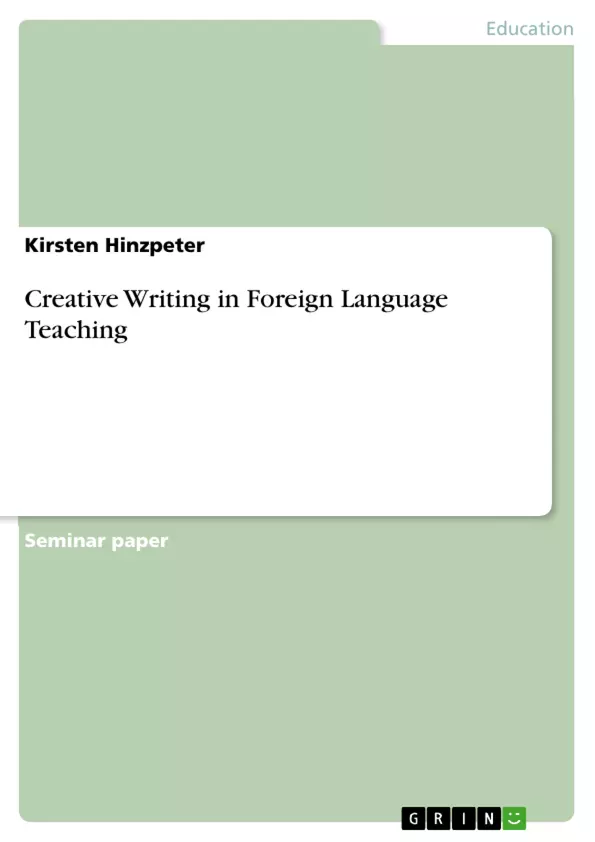The idea of creativity in the classroom first came up in the 1970s as a means of “Erneuerung, Veränderung [und] Selbstentfaltung” and in order to combat “Verkrustung, Erstarrung [und] Routine” (Thaler in Klippel 2008: 236). At first merely German lessons were affected by this new trend but soon afterwards it became a part in foreign language teaching as well. Today creative writing is considered by many scholars as an important component of teaching foreign languages. In the following it will be discussed what crea-tive writing actually is and why it is important. Furthermore, the process character and the question how creative writing should be marked will be examined.
Inhaltsverzeichnis (Table of Contents)
- Introduction
- What is Creative Writing?
- Why is Creative Writing Important?
- Creative Writing as Process Writing
- Pre-Writing
- Writing
- Post-Writing
- How to Mark Creative Writing?
Zielsetzung und Themenschwerpunkte (Objectives and Key Themes)
This paper aims to define creative writing within the context of foreign language teaching, explore its importance, and analyze its process-oriented nature. It also briefly touches upon assessment strategies for creative writing assignments.
- Defining creative writing in the educational setting
- The benefits of creative writing for foreign language acquisition
- The process of creative writing as a multi-stage activity (pre-writing, writing, post-writing)
- The role of stimuli and vocabulary preparation in creative writing
- Assessment approaches for creative writing tasks
Zusammenfassung der Kapitel (Chapter Summaries)
Introduction: Briefly introduces the concept of creativity in language education and its evolution in foreign language teaching.
What is Creative Writing?: Explores different definitions of creative writing, emphasizing its individual and subjective nature depending on the student's existing knowledge and experience.
Why is Creative Writing Important?: Discusses the importance of creative writing in foreign language teaching, highlighting its contribution to holistic brain engagement, mimicking language acquisition processes, offering variation in learning, and catering to individual student interests.
Creative Writing as Process Writing: Presents a process-oriented approach to creative writing, dividing it into pre-writing, writing, and post-writing stages. The pre-writing stage focuses on generating stimuli and clarifying task parameters.
Schlüsselwörter (Keywords)
Creative writing, foreign language teaching, process writing, language acquisition, holistic learning, assessment, pre-writing, stimuli, vocabulary, cognitive strategies.
- Quote paper
- Kirsten Hinzpeter (Author), 2009, Creative Writing in Foreign Language Teaching, Munich, GRIN Verlag, https://www.grin.com/document/187474



